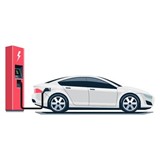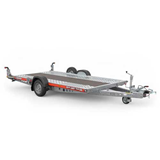The 2014 Heavy Vehicle Charges Determination Draft Regulation Impact Statement outlines proposed options for heavy vehicle registration and road user charges (RUC - also known as the fuel charge) and builds upon the findings of the Heavy Vehicle Charges Review conducted during 2012 and 2013.
"In May 2013, the NTC completed a review of the current charging system for heavy vehicles in collaboration with stakeholders, and identified opportunities to improve the manner in which charges are determined," said Paul Retter, NTC chief executive and commissioner.
"The Standing Council on Transport and Infrastructure (SCOTI) endorsed the NTC proceeding with the determination based on these recommendations.
"One of the key recommendations was to explore ways to raise the road user charge above its current level to allow for a reduction in the registration charge.
"Industry feedback suggests that this may reduce an operator's fixed costs and address problems currently being experienced by low mileage operators."
The draft Regulation Impact Statement (RIS) proposes several options for calculating heavy vehicle charges:
- Updated status quo uses the current charges methodology with updated road expenditure and vehicle usage data. In addition, this option would use the most recent vehicle numbers from state/territory road agency registration databases to estimate registration revenue, rather than the current method of relying on survey data collected every two years.
- Option A would incorporate the range of technical improvements to the current system resulting from the review, and maintain the current split in revenue between RUC and registration charges (62.1 per cent raised through RUC, 37.9per cent raised through registration charges).
- Options B and C include the same technical improvements as Option A, but recover a higher proportion of revenue through RUC than is currently the case. Option B represents a moderate shift (71.7 per cent raised through RUC, 28.3per cent raised through registration charges) whereas Option C represents the most significant shift (79.2per cent raised through RUC, 20.8 per cent raised through registration charges).
These options, together with details of proposed heavy vehicle charges, are provided for public consultation.
Options A, B and C incorporate technical improvements to the current system resulting from the review.
"This includes using more up-to-date road expenditure and vehicle usage data, the adoption of axle grouping charging to better reflect how industry uses heavy vehicles and improving the accuracy and transparency of heavy vehicle related expenditure reporting," said Retter.
"The NTC used a collaborative co-design approach involving both governments and industry participants in order to develop the proposed options for heavy vehicle charges. The consultation period aims to facilitate further discussions and input."
Retter encouraged those in the heavy vehicle industry to provide feedback by attending the upcoming consultation forums in various regional and urban locations or by making a submission on the draft RIS via the NTC website, before 17 January 2014.













